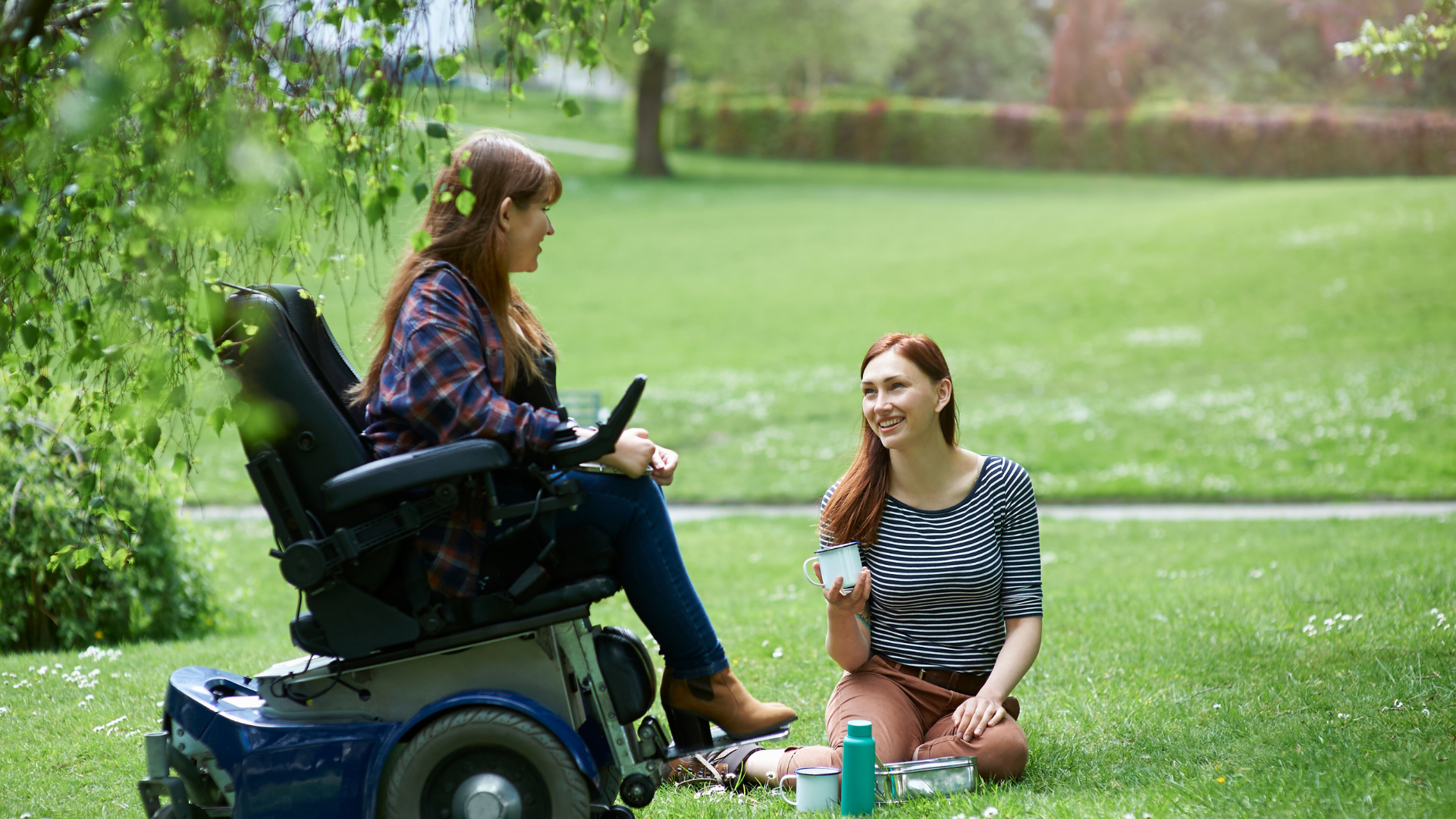
Weddings. Graduations. Festivals. Not all events happen on even concrete or asphalt. Occasionally, life requires your presence on grass or other potential “off-road” locations. The terrain shouldn’t stop you from being present in life’s big moments.
You can better tackle traversing over trying terrain with proper preparation and attachments. Read here to see what your electric or manual wheelchair needs to go off-roading and what you can do to make your adventure easier.
What Do Electric Wheelchairs Need to Go on Grass?
Electric wheelchairs have a simpler time going over grass with proper preparation. Compared to manual chairs, power wheelchairs are markedly heavier. This creates an issue when going over grass and soils, where the weight may cause the chair to sink into the ground.
Larger, Puncture-Proof Tires
Larger tires and casters, preferably made for “all-terrain” or “off-roading,” are better at weight distribution and can prevent this from happening. Further, puncture-proof tires can prevent an accident you would rather not have. Grass can hide any objects, like glass, sharp sticks, or rocks, that would puncture a tire and potentially leave you stranded.
Good Performing Brakes
Strong brakes are a necessity. Stopping momentum is even harder on grass, especially when damp. If you plan on going off asphalt anytime soon, have your brakes checked and replaced.
Clean the Chair Afterwards
Unfortunately, traveling like this can dirty your chair faster than normal travel on pavement or cement. Even worse, grass and soil can pass moisture onto the chair and create rust if not cleaned or dried properly. When finished traveling, remove any bits of mud or grass that have attached to your chair, and dry it properly. Ask for help if it’s available, as many hands make light work.
What Do Electric Wheelchairs Need to Go on Grass?
When using a manual wheelchair on grass, there are attachments and supplements to help your travels. Wide wheels, as mentioned before, are great for helping distribute the weight and prevent sinking into grass and soft soil.
The FreeWheel is an attachment for manual wheelchairs that raises the front castors off the ground and replaces them with a single, larger front wheel. The castors are more likely to sink into grass, and the larger front wheel provides more stability over uneven grounds.
In a pinch, and if you are allowed to, you can place carpet or plywood over grass or soil to mitigate any off-roading.
How to Use an Electric Wheelchair on Grass
When you need to go off the beaten path and traverse some difficult terrain, there are some steps to minimize the stress you might feel.
Check for Dampness or Mud
Riding over grass or dirt can be difficult on its own. Adding moisture or any amount of slickness can significantly impede your ability to travel. Scout out a path to take and avoid any areas that are muddy or damp. If you are able, bring a family member or friend to check for potential routes. Bringing a companion can also help get you and your chair out of the mud in the event you get stuck.
Consistent Speed
Long stretches of grass and other greenery can make varying speeds and directions difficult. Once you’ve picked a course that’s free of mud and damp grass, maintain a consistent speed and direction to keep control of the wheelchair. This will help you stay in control and provide more traction for your chair.
Need to Bring Your Wheelchair Off-Road?
Don’t let terrain keep you from being a part of your life. At Freedom Mobility, we’re committed to providing our customers with excellent support to ensure they’re present for all of life's important moments. When you need expert advice on choosing a wheelchair, finding attachments, or repairing your current device, our team is here to help!
Call 800-890-5696 or contact us today to learn more about our products and services and how we can help you stay mobile in any terrain.
August 28, 2024 by Freedom Mobility
Weddings. Graduations. Festivals. Not all events happen on even concrete or asphalt. Occasionally, life requires your presence on grass or other potential “off-road” locations. The terrain shouldn’t stop you from being present in life’s...